Instruction
A recipe for better putting
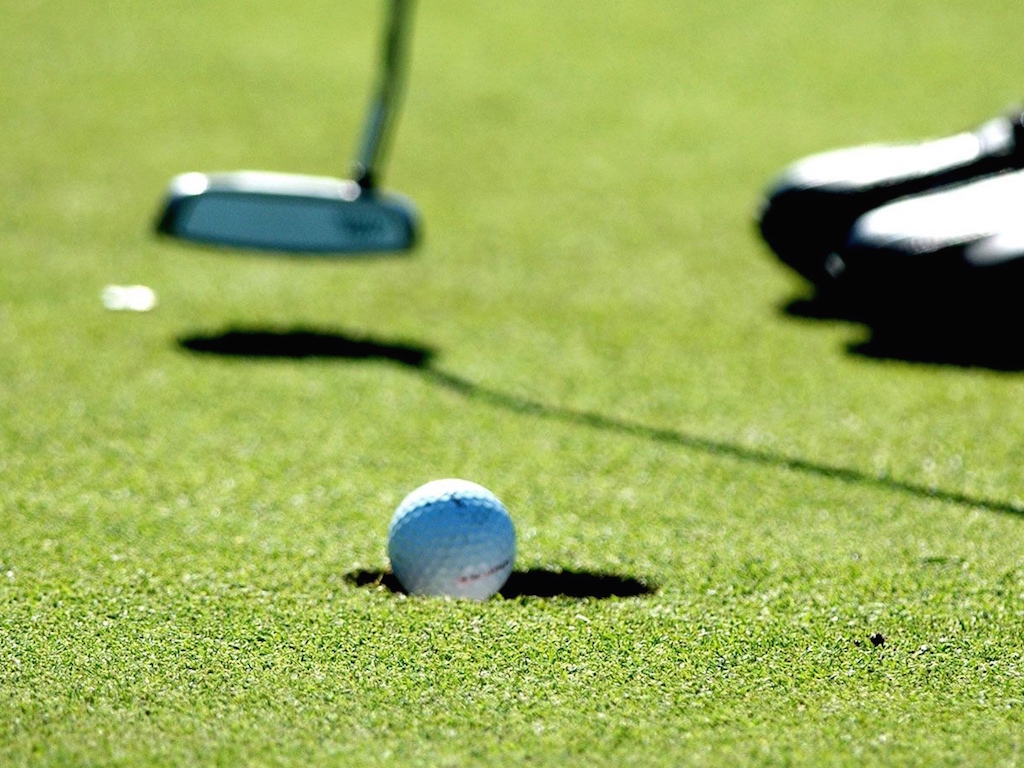
How do you become a better putter? A reliable recipe would be to consistently roll the ball on your intended line with good speed. It may sound simple, but mastering those two fundamentals takes hard work.
My job as an instructor is to quantify those ideals and a few more, and build on them by digging deeper into a golfer’s putting stroke. I use the S.A.M. PuttLab (Science and Motion), because it helps quantify factors that the naked eye simply cannot see, and yields quicker progressions.
Rolling the Ball On Line
There are two main basic factors that influence a putt’s starting direction:
- Face Angle
- Club Path
We’ll start with the face angle, since studies have shown it has more than twice the importance of path.
Fun Fact: The face at impact is responsible for approximately 83 percent of the ball’s starting direction. So let’s say you are hitting a 10-foot putt and your path is perfectly down the target line, not to the left or right. If your face is perfectly square, you will hit the putt at the center of the hole. If your putter face is one degree off (left or right), however, you will hit the edge of the hole on a 10-foot putt.
That’s right folks. If your face is only 1-degree offline with a zero path your ball could lip in or it could lip out! A true 50/50 ball. As it turns out, putting is pretty hard and there is a pretty small margin for error, but you probably already knew that.
As far as path goes, I have found that most bad putters swing the putter to the left (if they’re right-handed) and cut across the ball with an open putter face. Most golfers also adjust their putter face to compliment their path at impact. However, hitting putts with an open face makes the ball roll worse than its antithisis, the closed putter face.
Notice in the pictures of the report below that the golfer is a left swinger of the putter head, and he gets a lower score because the machine knows that this is not desirable. However, the player is really consistent so the score for consistency is high because the machine knows that the player, although maybe a little volatile, has a repetitive action.
I would change the shape of this putting stroke. If a golfer cuts across putts, then they usually take the putter straight back or even outside the target line and then swing the putter left through impact.
My suggestion is to take the putter inside on the backswing, thus giving golfers a better chance to swing the putter right or down the line through impact. This will help them zero out the path of the putter head. The ball will roll better, allowing golfers to hit more solid and straight putts. When golfers fix the path, the face will — usually within an hour practice session — fix itself.
The speed you need
If you take lessons from different “putting gurus,” you will hear many different brands of verbiage, but consistent philosophies when it comes to speed control. The basic quantifiable fundaments for putting are tempo, timing and consistency of both tempo and timing.
For the sake of this article, I am going to keep this simple.
- Tempo is the rhythm of your putting stroke.
- Timing is how well your mechanics come together with your tempo and in a proper sequence. What is considered “good” is a 2-to-1 ratio between Backswing Time and Time to Impact.
The most important term, however, is consistency. If you are not consistent with tempo or timing you will not have any feel. Your brain needs to have an idea of the pace that you swing the putter. This consistency gives you confidence, and that confidence allows you to commit to your line and roll the ball on that line with the correct pace.
My best tip for better distance control is to always hold your finish while hitting putts.
Understand that putting is very similar to shooting a basketball. Everyone remembers Reggie Miller’s “Goose-Neck” follow through while raining down jumpers in the NBA. It was his attention to detail that made him one of the greatest shooters that ever was. Miss or make, he would be holding his right arm in the same position every single time.
The same goes for putting in golf. You want to hold your finish, your hands and the putter head, in the same position every time (relative to the length of the putt and size of the stroke obviously) and when you do this your timing will become more consistent.
Conclusion
The moral of this story is that there are no shortcuts to making putts. Hard work and dedicated practice is the only way. “If you work hard, your only real opponent is the moment” and it is true.
You think getting better is hard? You’re right. Embrace that notion and enjoy the process!
- LIKE96
- LEGIT26
- WOW7
- LOL0
- IDHT3
- FLOP6
- OB1
- SHANK14
Instruction
The Wedge Guy: The easiest-to-learn golf basic

My golf learning began with this simple fact – if you don’t have a fundamentally sound hold on the golf club, it is practically impossible for your body to execute a fundamentally sound golf swing. I’m still a big believer that the golf swing is much easier to execute if you begin with the proper hold on the club.
As you might imagine, I come into contact with hundreds of golfers of all skill levels. And it is very rare to see a good player with a bad hold on the golf club. There are some exceptions, for sure, but they are very few and very far between, and they typically have beat so many balls with their poor grip that they’ve found a way to work around it.
The reality of biophysics is that the body moves only in certain ways – and the particulars of the way you hold the golf club can totally prevent a sound swing motion that allows the club to release properly through the impact zone. The wonderful thing is that anyone can learn how to put a fundamentally sound hold on the golf club, and you can practice it anywhere your hands are not otherwise engaged, like watching TV or just sitting and relaxing.
Whether you prefer an overlap, interlock or full-finger (not baseball!) grip on the club, the same fundamentals apply. Here are the major grip faults I see most often, in the order of the frequency:
Mis-aligned hands
By this I mean that the palms of the two hands are not parallel to each other. Too many golfers have a weak left hand and strong right, or vice versa. The easiest way to learn how to hold the club with your palms aligned properly is to grip a plain wooden ruler or yardstick. It forces the hands to align properly and shows you how that feels. If you grip and re-grip a yardstick several times, then grip a club, you’ll see that the learning curve is almost immediate.
The position of the grip in the upper/left hand
I also observe many golfers who have the butt of the grip too far into the heel pad of the upper hand (the left hand for right-handed players). It’s amazing how much easier it is to release the club through the ball if even 1/4-1/2″ of the butt is beyond the left heel pad. Try this yourself to see what I mean. Swing the club freely with just your left hand and notice the difference in its release from when you hold it at the end of the grip, versus gripping down even a half inch.
To help you really understand how this works, go to the range and hit shots with your five-iron gripped down a full inch to make the club the same length as your seven-iron. You will probably see an amazing shot shape difference, and likely not see as much distance loss as you would expect.
Too much lower (right) hand on the club
It seems like almost all golfers of 8-10 handicap or higher have the club too far into the palm of the lower hand, because that feels “good” if you are trying to control the path of the clubhead to the ball. But the golf swing is not an effort to hit at the ball – it is a swing of the club. The proper hold on the club has the grip underneath the pad at the base of the fingers. This will likely feel “weak” to you — like you cannot control the club like that. EXACTLY. You should not be trying to control the club with your lower/master hand.
Gripping too tightly
Nearly all golfers hold the club too tightly, which tenses up the forearms and prevents a proper release of the club through impact. In order for the club to move back and through properly, you must feel that the club is controlled by the last three fingers of the upper hand, and the middle two fingers of the lower hand. If you engage your thumbs and forefingers in “holding” the club, the result will almost always be a grip that is too tight. Try this for yourself. Hold the club in your upper hand only, and squeeze firmly with just the last three fingers, with the forefinger and thumb off the club entirely. You have good control, but your forearms are not tense. Then begin to squeeze down with your thumb and forefinger and observe the tensing of the entire forearm. This is the way we are made, so the key to preventing tenseness in the arms is to hold the club very lightly with the “pinchers” — the thumbs and forefingers.
So, those are what I believe are the four fundamentals of a good grip. Anyone can learn them in their home or office very quickly. There is no easier way to improve your ball striking consistency and add distance than giving more attention to the way you hold the golf club.
More from the Wedge Guy
- The Wedge Guy: Golf mastery begins with your wedge game
- The Wedge Guy: Why golf is 20 times harder than brain surgery
- The Wedge Guy: Musings on the golf ball rollback
- LIKE44
- LEGIT9
- WOW3
- LOL1
- IDHT0
- FLOP1
- OB0
- SHANK3
Instruction
Clement: Stop ripping off your swing with this drill!

Not the dreaded headcover under the armpit drill! As if your body is defective and can’t function by itself! Have you seen how incredible the human machine is with all the incredible feats of agility all kinds of athletes are accomplishing? You think your body is so defective (the good Lord is laughing his head off at you) that it needs a headcover tucked under the armpit so you can swing like T-Rex?
- LIKE0
- LEGIT1
- WOW2
- LOL0
- IDHT0
- FLOP0
- OB0
- SHANK2
Instruction
How a towel can fix your golf swing

This is a classic drill that has been used for decades. However, the world of marketed training aids has grown so much during that time that this simple practice has been virtually forgotten. Because why teach people how to play golf using everyday items when you can create and sell a product that reinforces the same thing? Nevertheless, I am here to give you helpful advice without running to the nearest Edwin Watts or adding something to your Amazon cart.
For the “scoring clubs,” having a solid connection between the arms and body during the swing, especially through impact, is paramount to creating long-lasting consistency. And keeping that connection throughout the swing helps rotate the shoulders more to generate more power to help you hit it farther. So, how does this drill work, and what will your game benefit from it? Well, let’s get into it.
Setup
You can use this for basic chip shots up to complete swings. I use this with every club in my bag, up to a 9 or 8-iron. It’s natural to create incrementally more separation between the arms and body as you progress up the set. So doing this with a high iron or a wood is not recommended.
While you set up to hit a ball, simply tuck the towel underneath both armpits. The length of the towel will determine how tight it will be across your chest but don’t make it so loose that it gets in the way of your vision. After both sides are tucked, make some focused swings, keeping both arms firmly connected to the body during the backswing and follow through. (Note: It’s normal to lose connection on your lead arm during your finishing pose.) When you’re ready, put a ball in the way of those swings and get to work.

Get a Better Shoulder Turn
Many of us struggle to have proper shoulder rotation in our golf swing, especially during long layoffs. Making a swing that is all arms and no shoulders is a surefire way to have less control with wedges and less distance with full swings. Notice how I can get in a similar-looking position in both 60° wedge photos. However, one is weak and uncontrollable, while the other is strong and connected. One allows me to use my larger muscles to create my swing, and one doesn’t. The follow-through is another critical point where having a good connection, as well as solid shoulder rotation, is a must. This drill is great for those who tend to have a “chicken wing” form in their lead arm, which happens when it becomes separated from the body through impact.
In full swings, getting your shoulders to rotate in your golf swing is a great way to reinforce proper weight distribution. If your swing is all arms, it’s much harder to get your weight to naturally shift to the inside part of your trail foot in the backswing. Sure, you could make the mistake of “sliding” to get weight on your back foot, but that doesn’t fix the issue. You must turn into your trial leg to generate power. Additionally, look at the difference in separation between my hands and my head in the 8-iron examples. The green picture has more separation and has my hands lower. This will help me lessen my angle of attack and make it easier to hit the inside part of the golf ball, rather than the over-the-top move that the other picture produces.


Stay Better Connected in the Backswing
When you don’t keep everything in your upper body working as one, getting to a good spot at the top of your swing is very hard to do. It would take impeccable timing along with great hand-eye coordination to hit quality shots with any sort of regularity if the arms are working separately from the body.
Notice in the red pictures of both my 60-degree wedge and 8-iron how high my hands are and the fact you can clearly see my shoulder through the gap in my arms. That has happened because the right arm, just above my elbow, has become totally disconnected from my body. That separation causes me to lift my hands as well as lose some of the extension in my left arm. This has been corrected in the green pictures by using this drill to reinforce that connection. It will also make you focus on keeping the lead arm close to your body as well. Because the moment either one loses that relationship, the towel falls.


Conclusion
I have been diligent this year in finding a few drills that target some of the issues that plague my golf game; either by simply forgetting fundamental things or by coming to terms with the faults that have bitten me my whole career. I have found that having a few drills to fall back on to reinforce certain feelings helps me find my game a little easier, and the “towel drill” is most definitely one of them.
- LIKE11
- LEGIT1
- WOW2
- LOL0
- IDHT0
- FLOP2
- OB0
- SHANK8
-

 19th Hole5 days ago
19th Hole5 days agoJohn Daly stuns fans into silence with brutal opening tee shot on PGA Tour Champions
-

 19th Hole1 week ago
19th Hole1 week ago2-time major champ announces shock retirement from the sport at age of 33
-

 19th Hole1 week ago
19th Hole1 week agoEdoardo Molinari reveals the latest PGA Tour golfer to turn down ‘good offer’ from LIV Golf
-

 19th Hole5 days ago
19th Hole5 days agoCharlie Woods finds it tough going on American Junior Golf Association debut
-

 19th Hole2 weeks ago
19th Hole2 weeks agoScottie Scheffler had an interesting response when asked how he ‘quiets the noise’ following Players victory
-

 Equipment2 weeks ago
Equipment2 weeks agoBest driver 2024: The best driver for you, as recommend by expert club fitters
-

 19th Hole2 weeks ago
19th Hole2 weeks agoJon Rahm dealt fresh blow to hopes of qualifying for 2025 Ryder Cup
-
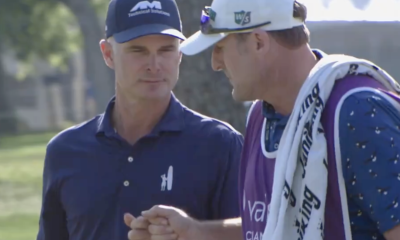
 19th Hole1 week ago
19th Hole1 week agoWhy Kevin Streelman sought USGA approval to use this equipment tool as he leads Valspar after round one

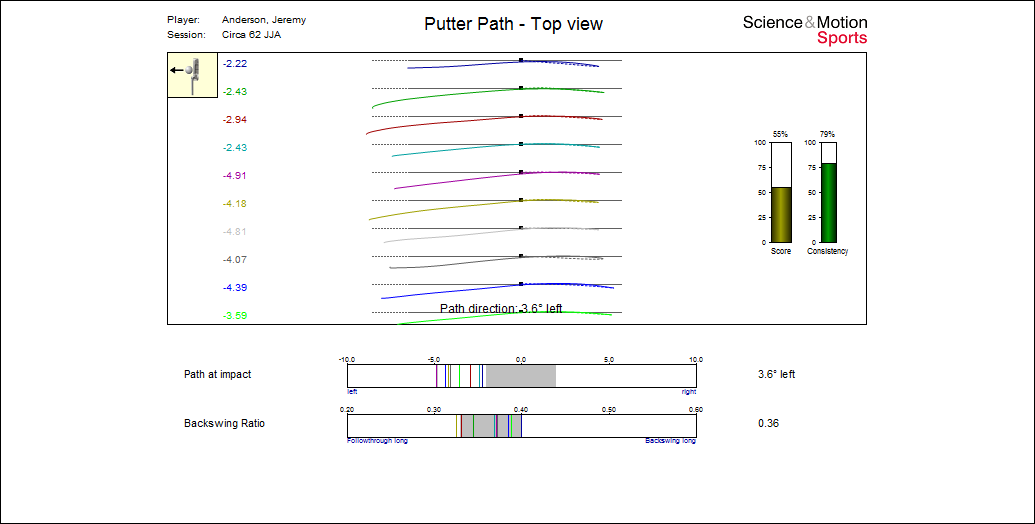
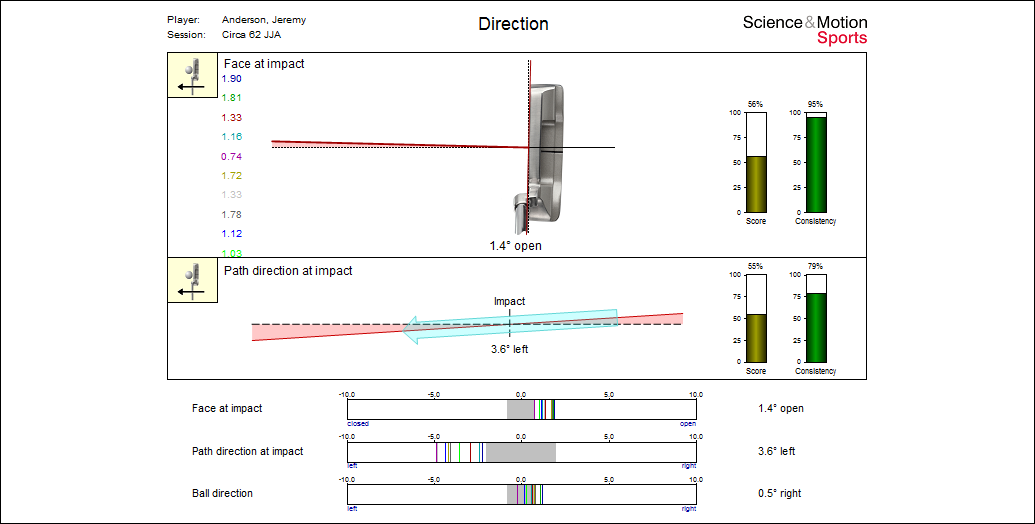
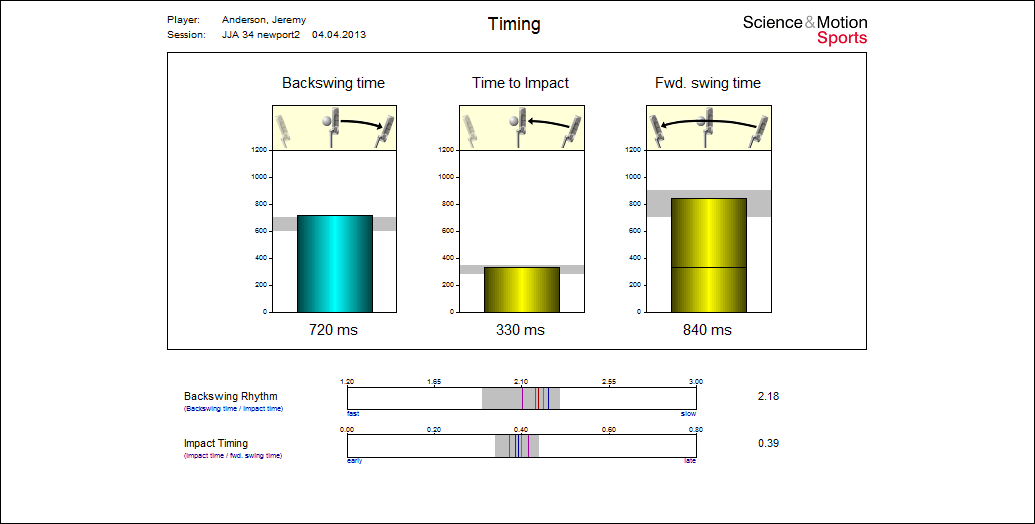
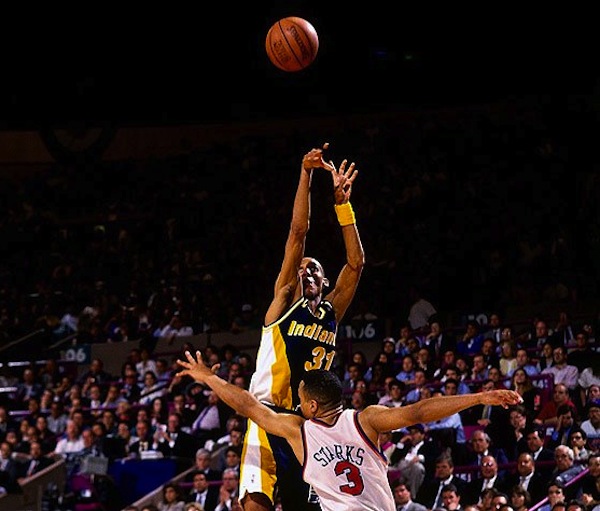












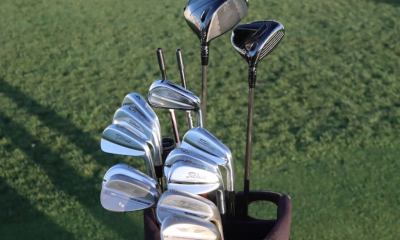

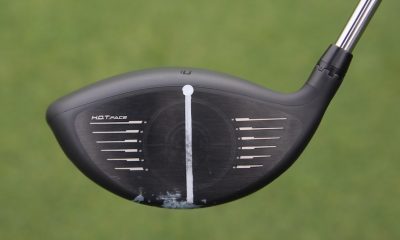

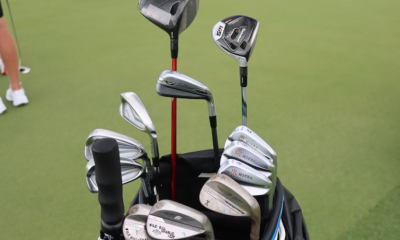



other paul
Mar 24, 2015 at 3:40 pm
i would love to see an article from you about putting alignment and perceived location of the hole. I found I missed 9/10 putts to the right at 10′. Had a laser attached to my putter and it showed I perceived the hole where it is not.
Jeremy Anderson
Mar 24, 2015 at 4:34 pm
Other Paul-
Every golfer searches for perfection. It is better to have really consistent aim than perfect aim. I’ll get on that topic though! Thanks!!
Chris
Mar 23, 2015 at 5:10 pm
I don’t think the results are the result of poor consistency overall and not just a left path as you imply. Here is a link to puttlab report for a 2.8 left path player and I doubt that anyone would say that Loren Roberts was a poor putter: http://www.samsports.us/PuttLab%20Data/LorenRoberts.pdf. Your example players numbers have significant variance in both path and face angle but you also neglect to show the other numbers such as loft at impact and where the ball impacts the face. You state that people with a right biased/close face roll the ball better; how does the ball know that the face is open or closed ? The poor roll is probably more a result of a poorly fit putter and not an open or closed face. Can you explain why you think a “closed” face puts a better roll on the ball give a consistent rate of rotation, center hit, and proper angle of attack/loft at impact?
Jeremy Anderson
Mar 23, 2015 at 5:23 pm
Chris-
I agree! Someone with a good rise into the ball and proper loft will roll the ball well. This is merely my take on a large handful of my students feel. Typically when I see a player swing it straight back the putter is going left at impact. I am just giving a fix to a misconception of straight back/thru feel. I see a lot of straight back to left path with a face open at address.
Chris
Mar 23, 2015 at 5:46 pm
Thanks for the response. I agree with you on the SBST feel resulting in the appearance of SB but left as the stroke goes through the ball; this may also result in the face being closed at impact because of normal rotation. To compensate you get the player manipulating the stroke and holding it open to eliminate the left miss. Manipulation is the real problem and the manipulation can be fixed several ways including changing the stroke mechanics to reduce the left stroke path or fitting the player to a putter that has a slower rotation to naturally be open the correct amount at impact.
Mike
Mar 23, 2015 at 3:20 pm
I always pull putts. Even though the Ping app says my stroke is very consistent and rates me near scratch. I’d give anything to stop pulling them.
A
Mar 23, 2015 at 3:41 pm
I suffer the same problem. My path is usually straight or in to out, and my putter face is square at address and between 1-2 degrees closed at impact (I was told it was like a draw swing-putt). Over 12-17 foot putts, 1 or 2 out of five putts will go in and 3-4 will miss left. This is on a perfectly flat surface using the putt lab.
Wish I could figure out how to keep them straight without feeling like I’m manipulating my stroke.
Chris
Mar 23, 2015 at 5:11 pm
Try a putter with less offset.
Jeremy Anderson
Mar 23, 2015 at 5:15 pm
A-
The less manipulated feeling would be a grip change. Do you think it would feel too awkward to weaken your lead hand on the grip? I’d like to know more about how consistent the rotation of your putter face is..
Jeremy Anderson
Mar 23, 2015 at 4:53 pm
You sound like you roll it well.. You have a different and nearly the opposite problem from what I’m talking about in the article. I would try a slight grip change. I’d like to hear more…. How do you aim?